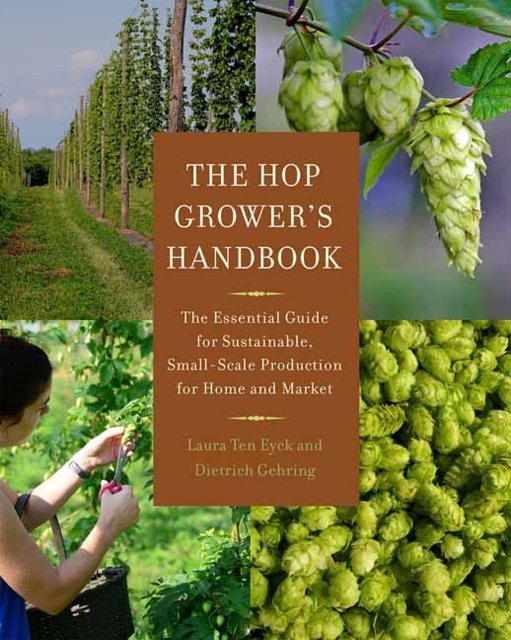The Hop Grower's Handbook: The Essential Guide for Sustainable, Small-Scale Production for Home and Market
The Essential Guide for Sustainable, Small-Scale Production for Home and Market
Laura Ten Eyck

| ISBN: | 9781603585552 |
| Publisher: | Chelsea Green Publishing Co |
| Published: | 24 September, 2015 |
| Format: | Paperback |
| Language: | English |
| Editions: |
2 other editions
of this product
|
| Saving: | Saving: $98.98 or 74% |
The Hop Grower's Handbook: The Essential Guide for Sustainable, Small-Scale Production for Home and Market
The Essential Guide for Sustainable, Small-Scale Production for Home and Market
Laura Ten Eyck
With information on siting, planting, tending, harvesting, processing, and brewing The runaway craft beer market and ever-expanding local foods movement have recently converged, and the inevitable outcome is an abrupt and robust demand by craft brewers for locally grown ingredients for making beer, such as hops—the flowers of which are essential to making beer—and barley. While that may be good news for farmers looking to diversify, there’s a catch. Hops have not been grown commercially in the Northeastern United States for one hundred years. After an onslaught of fungal disease and insects wiped out the hop yards at the turn of the century, the industry packed up and moved to arid regions of the Pacific Northwest. Today, farmers in New York and New England are working hard to respond to the craft brewers’ desperate call for locally grown hops. But hop yards, virtual forests of 20-foot poles, are expensive to build, and the hop vines that grow up them take three long years to reach full production. And what about the fungal diseases and insects that wiped out the hop industry last time around, which today are thriving in the hotter and more humid Northeast in this era of climate change? Answers to these and other questions can be found in the The Hop Grower’s Handbook—the only book on the market about raising hops sustainably, on a small scale, for the commercial craft beer market in the Northeast. Written by hop farmers and craft brewery owners Laura Ten Eyck and Dietrich Gehring, the book weaves the story of their Helderberg Hop Farm with the colorful history of New York and New England hop farming, relays horticultural information about the unusual hop plant and the mysterious resins it produces that give beer its distinctively bitter flavor, and imparts comprehensive instructions for establishing a healthy hop yard, protecting hops from disease and insects, and processing hops for sale to brewers. The book includes an overview of the numerous native, heirloom, and modern varieties of hops and their purposes, as well as an easy-to-understand explanation of the beer-brewing process, which is critical for hop growers to understand in order be able to provide a high-quality product brewers want to buy. (A few recipes are also included.) The overwhelming majority of resources about hop production currently available are geared toward the Pacific Northwest’s large-scale commercial growers, who use chemical pesticides, fungicides, herbicides, and fertilizers and deal with regionally specific climate, soils, weeds, and insect populations. Ten Eyck and Gehring, however, focus on farming hops sustainably. While they relay their experience about growing in a new Northeastern climate subject to the higher temperatures and volatile cycles of drought and deluge brought about by global warming, the book is an essential resource for home-scale and small-scale commercial hops growers in all regions. The book contains numerous photographs and illustrations.
Shop Preferences
Customize which shops to display. You can include the following shops by logging in to change your settings.
















